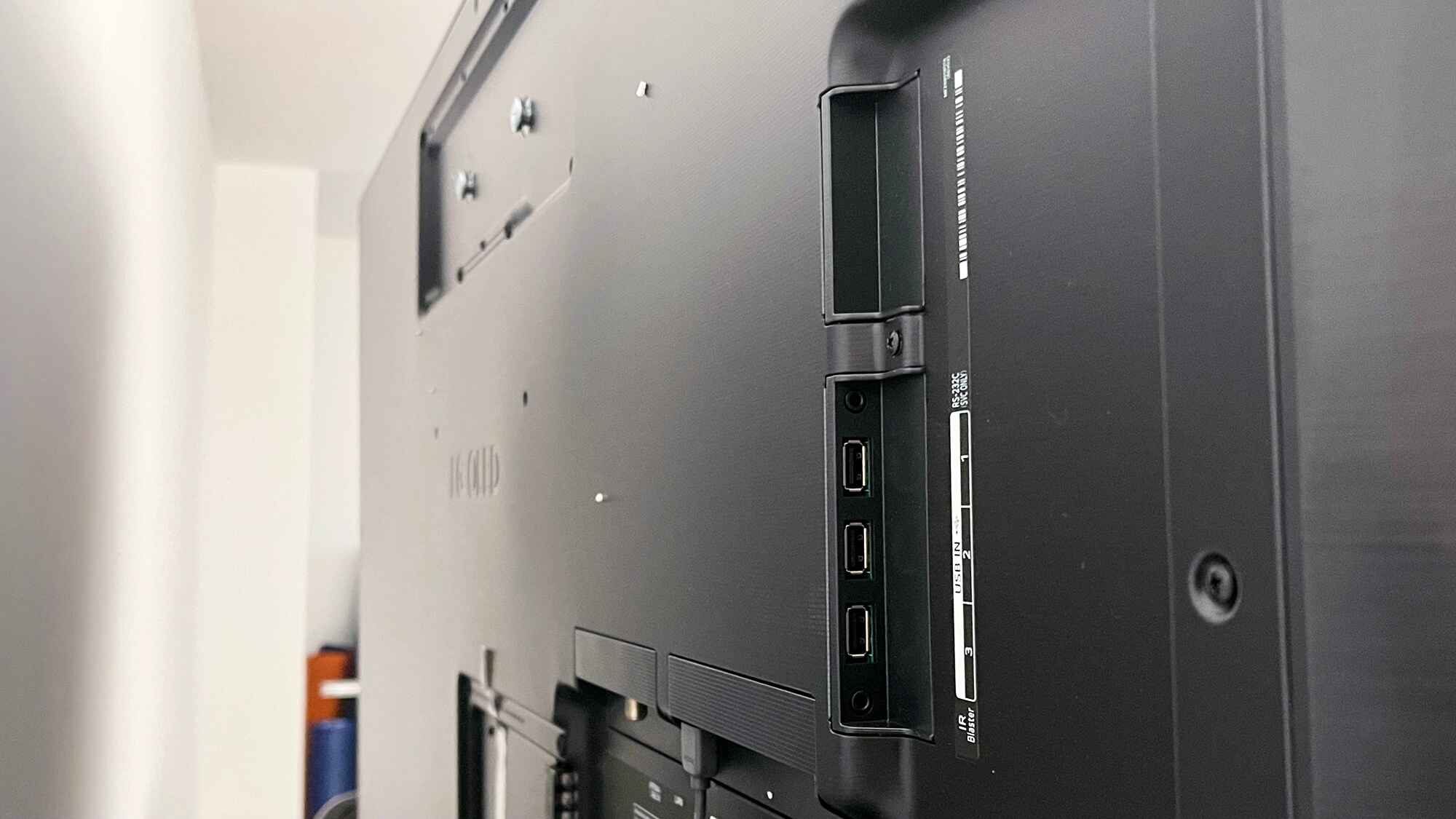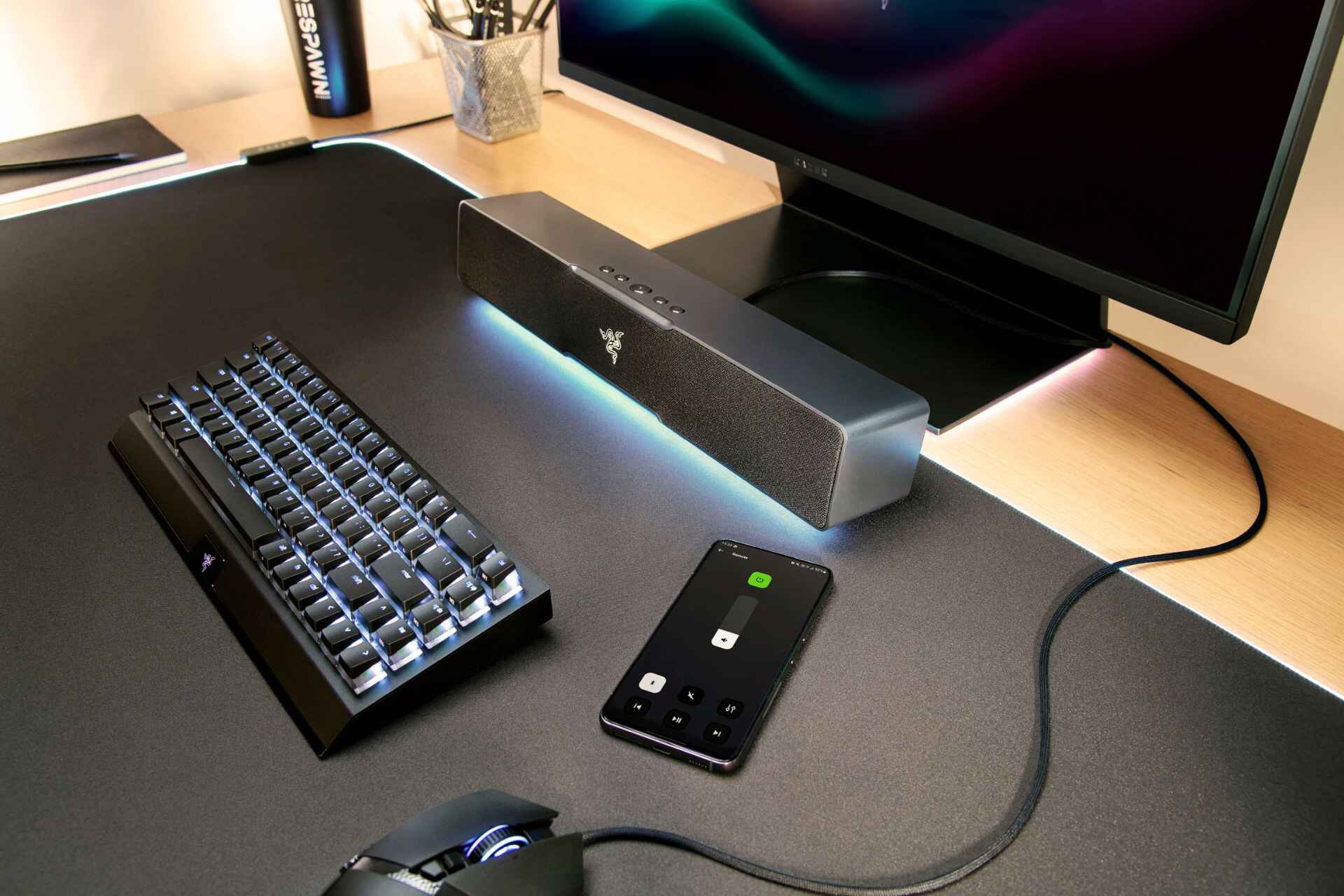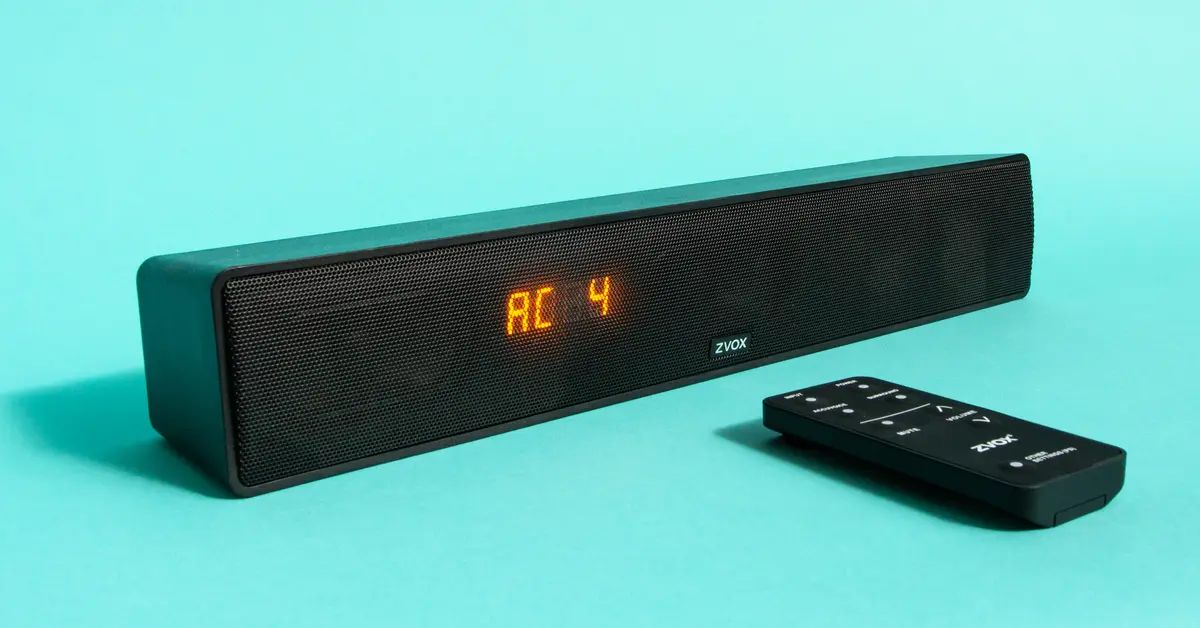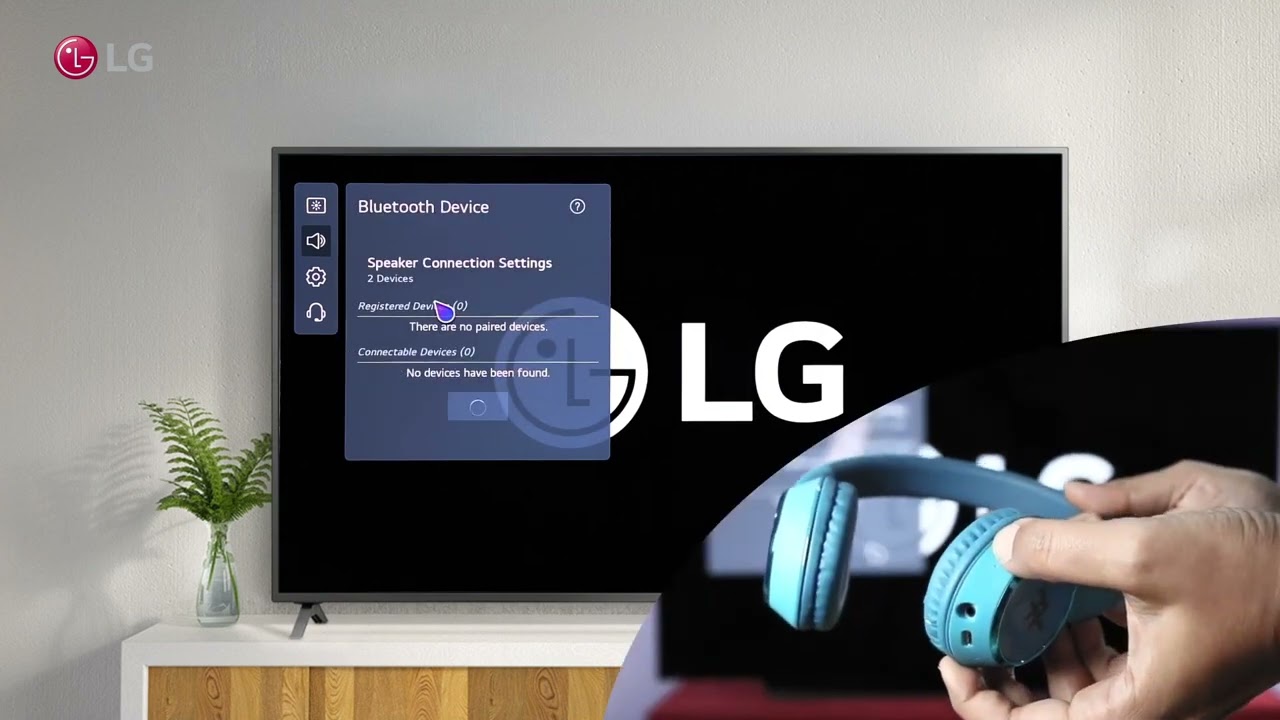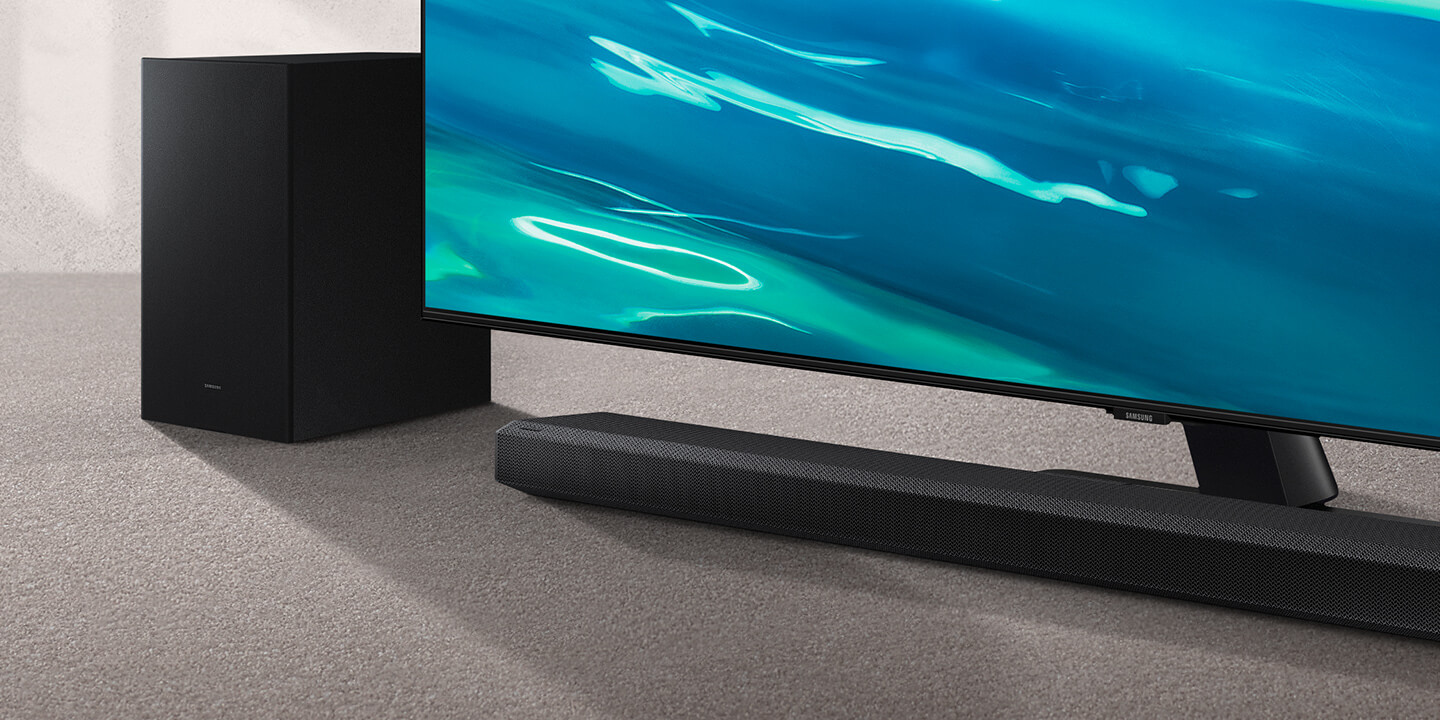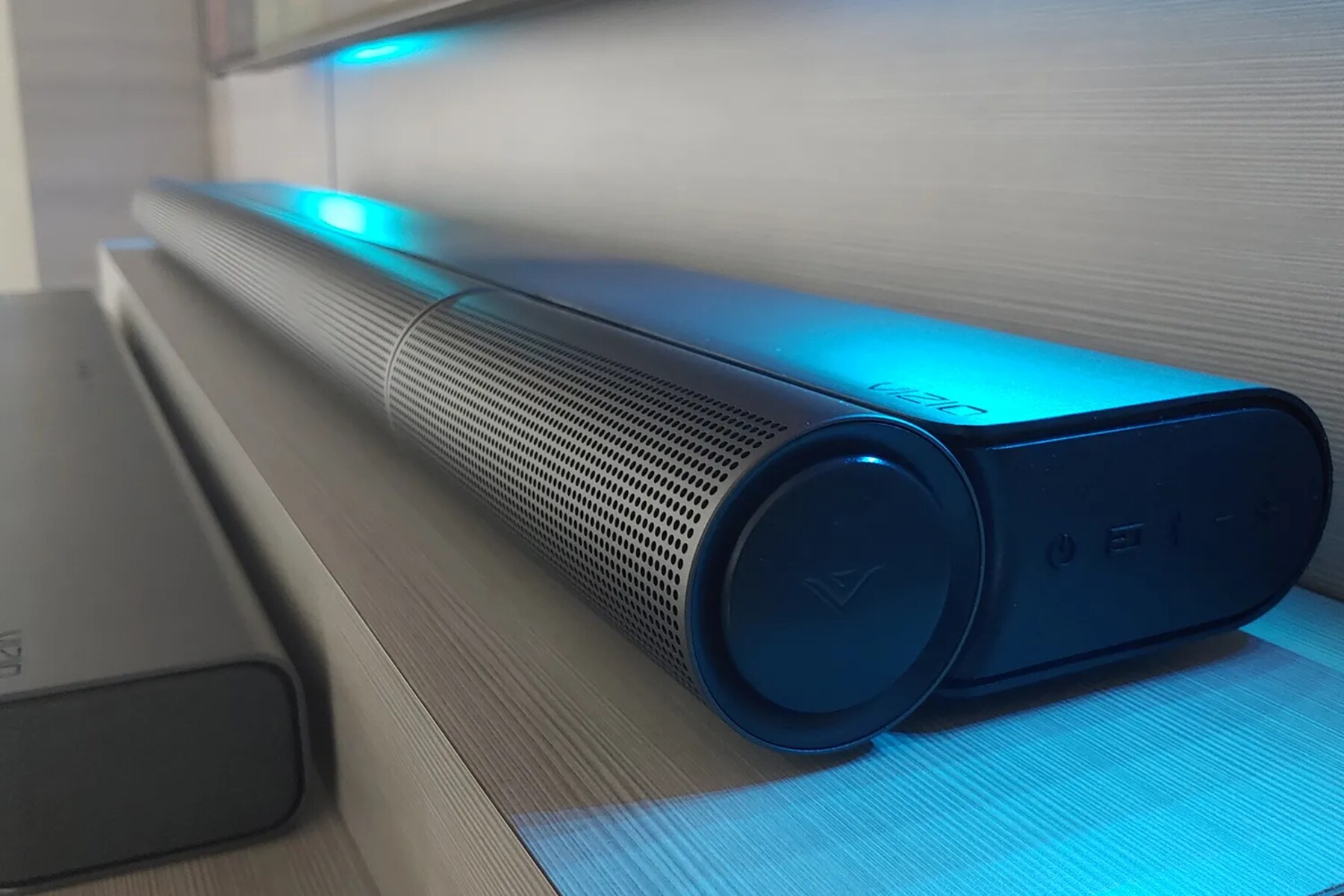Introduction
A soundbar is a popular audio device that provides high-quality sound and enhances the audio experience for TVs, gaming consoles, and other devices. With its sleek design and compact size, a soundbar is an excellent alternative to traditional bulky speaker systems.
Soundbars are designed to deliver immersive audio performance, making movies, music, and games more enjoyable. They offer several benefits, including space-saving, easy setup, and a wide range of connectivity options.
One feature that you may notice on some soundbars is the presence of a USB port. This USB port raises questions about its purpose and how it can be utilized. In this article, we will explore the reasons why soundbars have USB ports and the various ways you can make use of them.
Whether you’re a tech enthusiast or someone who is new to soundbars, understanding the function of a USB port on a soundbar can provide you with valuable insights into maximizing its potential.
What is a soundbar?
A soundbar is a compact audio device that is designed to improve the audio quality of your TV or other entertainment systems. It is a long, slender speaker that is typically placed either in front of the TV or mounted on the wall. It consists of multiple built-in speakers, amplifiers, and sound-processing technology to deliver immersive sound.
The primary purpose of a soundbar is to enhance the audio experience by providing clearer dialogue, richer sound effects, and a wider soundstage. It is an ideal solution for those who want to upgrade their TV’s built-in speakers without the hassle of a complex surround sound system.
Soundbars come in different shapes and sizes, ranging from basic models with a single speaker driver to more advanced ones with multiple drivers and built-in subwoofers. Some soundbars also offer additional features like Bluetooth connectivity, Wi-Fi streaming, and compatibility with virtual assistants like Amazon Alexa or Google Assistant.
The setup of a soundbar is usually straightforward, requiring only a few connections. It can be easily connected to your TV through an HDMI or optical cable. Some soundbars even support wireless connectivity, allowing you to stream audio from your mobile devices directly to the soundbar.
Overall, a soundbar is a convenient and space-saving audio solution that provides a significant improvement in sound quality over traditional TV speakers. It offers a simplified setup process, a stylish design, and a versatile range of features to enhance your audiovisual experience.
Benefits of using a soundbar
Using a soundbar can elevate your audio experience and bring several benefits to your entertainment setup. Here are some of the key advantages of using a soundbar:
- Improved sound quality: Soundbars are specifically designed to provide better sound quality compared to built-in TV speakers. They offer clearer dialogue, more detailed sound effects, and a wider soundstage, resulting in a more immersive audio experience.
- Space-saving design: Soundbars are sleek and compact, making them an excellent choice for those who are tight on space. They can be easily placed in front of the TV or mounted on the wall, eliminating the need for additional speakers and reducing clutter.
- Easy setup: Setting up a soundbar is typically hassle-free. Unlike traditional surround sound systems with multiple speakers and complex wiring, soundbars usually require only a few connections. This makes them a user-friendly option, even for those who are not tech-savvy.
- Versatile connectivity options: Soundbars offer various connectivity options to meet your needs. Most soundbars provide HDMI, optical, or Bluetooth connectivity, allowing you to connect them to your TV, gaming consoles, smartphones, or other devices wirelessly or through cables.
- Enhanced gaming experience: For gamers, soundbars can make a notable difference in the gaming experience. The precise audio delivery of a soundbar can provide more accurate spatial awareness, allowing you to fully immerse yourself in the game and react quickly to in-game sounds.
- Stylish design: Soundbars are designed to complement your TV and enhance the overall aesthetic appeal of your entertainment area. With their modern and sleek designs, they can effortlessly blend in with any home decor.
These benefits highlight why a soundbar is a popular audio solution for improving the sound quality of your TV or other entertainment systems. With their space-saving design, easy setup, versatile connectivity options, and enhanced audio performance, soundbars provide a compelling option for an immersive audio experience.
Understanding the different features of a soundbar
Soundbars come with a variety of features that enhance their performance and functionality. Understanding these features can help you choose the right soundbar for your needs. Here are some key features to consider:
- Number of channels: Soundbars are available in different configurations, typically denoted as 2.0, 2.1, 3.1, or 5.1. The first number represents the number of audio channels, whereas the second number indicates the presence of a separate subwoofer. More channels generally result in a more immersive audio experience.
- Subwoofers: Some soundbars come with a separate subwoofer, while others have a built-in subwoofer. A subwoofer is responsible for reproducing low-frequency sounds, adding depth and impact to your audio. If you prioritize a powerful bass response, consider a soundbar with a dedicated subwoofer.
- Sound modes and equalization: Many soundbars offer preset sound modes that are tailored for specific content types, such as movies, music, or gaming. These modes adjust the audio settings to provide the best audio experience. Some soundbars also offer manual equalization options to customize the sound to your liking.
- Connectivity options: Look for soundbars that offer multiple connectivity options, such as HDMI ARC (Audio Return Channel), optical, and Bluetooth. HDMI ARC allows you to send audio from your TV to the soundbar through a single HDMI cable. Optical connections provide high-quality audio, while Bluetooth enables wireless streaming from your mobile devices.
- Wireless technology: Advanced soundbars may feature Wi-Fi connectivity, allowing you to stream music wirelessly from compatible devices or access online streaming services. Some soundbars also support voice control through virtual assistants like Amazon Alexa or Google Assistant.
- Mounting options: Consider whether you want to mount the soundbar on the wall or place it in front of your TV. Look for soundbars that come with wall-mounting brackets or have a sleek design that complements a TV stand.
- Remote control and app integration: Check if the soundbar includes a remote control with user-friendly features. Additionally, some soundbars offer smartphone apps that provide additional control options and settings for a more customized audio experience.
By understanding the different features of soundbars, you can make an informed decision when choosing the right one for your audio needs. Consider your preferences, room size, and budget to find the soundbar that offers the features and performance that align with your requirements.
The purpose of a USB port on a soundbar
A USB port on a soundbar serves multiple purposes and adds versatility to its functionality. While the primary function of a soundbar is to enhance the audio experience, the inclusion of a USB port expands its capabilities beyond just audio playback.
One of the main purposes of a USB port on a soundbar is to allow for convenient playback of digital audio files. By connecting a USB flash drive or external hard drive to the soundbar’s USB port, you can directly play your favorite music, audio books, or podcasts without the need for any additional devices. This provides a straightforward and easy solution for enjoying your digital audio collection.
Furthermore, a USB port on a soundbar can also support other forms of media playback. You can connect a USB stick or hard drive containing movies or videos, and the soundbar can play the audio from these files while you watch the visuals on your TV. This feature comes in handy if you have media files stored on a USB device and want to enjoy them with enhanced audio quality provided by the soundbar.
Additionally, a soundbar’s USB port can serve as a power source for charging USB-powered devices, such as smartphones or tablets. This feature is particularly useful if you need to charge your devices while enjoying your audio content or if you have limited power outlets available. Simply connect your device to the soundbar’s USB port, and it will charge while you listen to your favorite audio.
Furthermore, some soundbars with USB ports offer additional functionality, such as firmware updates. Manufacturers may release firmware updates to improve the soundbar’s performance, add new features, or fix any issues. These updates can be conveniently applied by connecting a USB drive with the firmware file to the soundbar’s USB port. This ensures that your soundbar remains up-to-date and optimized for the best audio experience.
In summary, the presence of a USB port on a soundbar adds versatility and convenience to its functionality. It allows for easy playback of digital audio files, supports media playback from USB storage devices, serves as a power source for charging USB-powered devices, and facilitates firmware updates to keep the soundbar up-to-date. The USB port expands the capabilities of the soundbar beyond just audio playback and enhances its overall value to the user.
Connecting and using USB devices with a soundbar
Connecting and using USB devices with a soundbar is a straightforward process that allows you to enjoy your digital media and enhance your audio experience. Here are the steps to connect and use USB devices with a soundbar:
- Locate the USB port: On your soundbar, locate the USB port. It is usually located on the back or side of the soundbar. Make sure to check the soundbar’s user manual for the exact location of the USB port, as it may vary depending on the model.
- Prepare your USB device: Before connecting your USB device, ensure that it is compatible with the soundbar. Most soundbars support USB flash drives and external hard drives formatted in FAT32 or NTFS. If necessary, transfer your desired audio or media files to the USB device using a computer or other device.
- Connect the USB device: Take your USB device and insert it into the USB port on the soundbar. Make sure it is securely plugged in. The soundbar should detect the device and recognize the audio or media files stored on it.
- Select the USB input/source: On your soundbar’s remote control or control panel, select the USB input/source. This tells the soundbar to play the audio or display the media files from the connected USB device.
- Control playback: Once the USB device is connected and the USB input/source is selected, you can control the playback of your audio or media files. Use the soundbar’s remote control or control buttons to play, pause, skip tracks, adjust volume, or navigate through the media files.
- Charging USB-powered devices: If your soundbar supports device charging via the USB port, you can connect your USB-powered device, such as a smartphone or tablet, to the soundbar for charging. Simply plug the device into the USB port, and it will start charging while you listen to your audio.
- Disconnect the USB device: When you’re finished using the USB device, safely remove it from the soundbar. This prevents any potential data corruption or damage to the files stored on the USB device. Consult your soundbar’s user manual for specific instructions on how to safely remove the USB device.
By following these steps, you can easily connect and use USB devices with your soundbar. Whether you want to play your favorite music, enjoy movies with enhanced audio, or charge your USB-powered devices, the USB port on your soundbar provides a seamless and convenient solution.
What can you do with a USB port on a soundbar?
A USB port on a soundbar opens up a range of possibilities for expanding its functionality and enhancing your audio experience. Here are some of the things you can do with a USB port on a soundbar:
- Play digital audio files: One of the primary uses of a USB port on a soundbar is to play digital audio files. You can connect a USB flash drive or external hard drive containing your favorite music, podcasts, or audiobooks to the soundbar’s USB port. This allows you to enjoy your digital audio collection with enhanced sound quality through the soundbar’s speakers.
- Play media files: In addition to audio, some soundbars support playback of media files from USB devices. By connecting a USB stick or hard drive containing movies or videos, you can enjoy both the audio and visual experience together. The soundbar will deliver the audio from the media files while you watch the visuals on your TV.
- Charge USB-powered devices: If your soundbar supports device charging via the USB port, you can conveniently charge USB-powered devices such as smartphones, tablets, or portable music players. Simply connect your device to the soundbar’s USB port, and it will charge while you listen to your audio or watch your favorite content.
- Update firmware: Some soundbars allow firmware updates via the USB port. Manufacturers may release firmware updates to improve the soundbar’s performance, add new features, or fix any bugs or issues. By connecting a USB drive with the firmware file to the soundbar’s USB port, you can easily update the software of your soundbar, ensuring optimal performance and functionality.
- USB audio streaming: Certain soundbars support USB audio streaming, allowing you to connect your computer or other USB audio devices directly to the USB port. This enables high-quality audio streaming without the need for complicated setups or additional equipment.
By utilizing the USB port on your soundbar, you can expand its capabilities and tailor your audio experience to your preferences. Whether you want to play digital audio files, watch videos with enhanced audio, charge your devices, update firmware, or stream audio from USB sources, the USB port provides a versatile and convenient feature for maximizing the functionality of your soundbar.
Pros and cons of having a USB port on a soundbar
The inclusion of a USB port on a soundbar brings several advantages and a few potential drawbacks. Let’s explore the pros and cons of having a USB port on your soundbar:
Pros:
- Convenient media playback: A USB port allows you to directly connect USB devices such as flash drives or external hard drives to your soundbar, providing convenient playback of digital audio files and even media files like movies or videos.
- Expanded versatility: With a USB port, your soundbar can serve as a multi-functional hub. You can not only enhance your audio experience but also charge USB-powered devices or perform firmware updates, all through a single connection.
- Easy setup: Using a USB port is a straightforward process. Simply plug in your USB device, select the USB input/source, and you’re ready to enjoy your audio or media files. This ease of use makes it accessible to users of all technical backgrounds.
- Reduced clutter: By using the USB port on your soundbar, you eliminate the need for additional devices or cables that would otherwise clutter your entertainment setup. This contributes to a cleaner and more organized space.
Cons:
- Limited audio format compatibility: Some soundbars with USB ports have limitations on the audio formats they can play. Make sure to check the soundbar’s specifications or user manual to ensure compatibility with the audio file formats you intend to use.
- Limited file navigation features: Depending on the soundbar model and its interface, the file navigation features for USB playback may be limited. It may lack advanced features like playlist creation or extensive file browsing, making it less convenient for managing large collections of audio files.
- Potential incompatibility with USB devices: Not all USB devices may be compatible with your soundbar. Some soundbars may have issues reading certain USB drives due to formatting or file system compatibility. It’s important to test different USB devices to ensure smooth playback.
Overall, the presence of a USB port on a soundbar offers numerous benefits in terms of media playback convenience, expanded functionality, easy setup, and reduced clutter. However, it’s important to be aware of potential limitations such as audio format compatibility, file navigation features, and device compatibility. Understanding these pros and cons can help you make the most of the USB port on your soundbar and tailor your audio experience to your preferences.
Frequently asked questions about soundbars with USB ports
Here are some commonly asked questions about soundbars with USB ports, along with their respective answers:
Q: Can I play all audio formats through the USB port on my soundbar?
A: While most soundbars support popular audio formats like MP3, WAV, and AAC, it’s important to check the specifications or user manual of your soundbar to ensure compatibility with the specific audio formats you want to play.
Q: Can I connect a USB hard drive to my soundbar’s USB port?
A: Yes, many soundbars with USB ports support USB hard drives. Ensure that the hard drive is formatted in a compatible file system (such as FAT32 or NTFS) and that the soundbar’s user manual does not impose any size limitations on USB storage devices.
Q: Can I charge my smartphone or tablet using the USB port on the soundbar?
A: If your soundbar supports device charging via the USB port, you can indeed charge USB-powered devices such as smartphones or tablets by connecting them to the soundbar. This offers a convenient charging solution while you enjoy your audio content.
Q: Can I play video files from a USB device through the soundbar?
A: Some soundbars support video file playback from USB devices, while others may only extract the audio from video files and play that through the soundbar speakers. Check the capabilities of your specific soundbar model to determine its video playback capabilities.
Q: How can I update the firmware of my soundbar using the USB port?
A: To update the firmware of your soundbar, you will need to download the firmware update file from the manufacturer’s website and save it to a USB drive. Then, connect the USB drive to the soundbar’s USB port and follow the instructions provided by the manufacturer to initiate the firmware update process.
Q: Can I connect a USB keyboard or mouse to my soundbar?
A: USB ports on soundbars are typically designed for media playback and charging purposes. They are not designed to support USB keyboards or mice for input. Therefore, connecting a USB keyboard or mouse to a soundbar’s USB port is unlikely to provide any functionality.
These frequently asked questions address some common concerns and queries related to soundbars with USB ports. However, it’s always recommended to refer to the specific user manual or contact the manufacturer directly for any additional questions or clarification regarding your particular model of soundbar.
Conclusion
Soundbars with USB ports offer users a versatile and convenient audio solution that enhances their entertainment experience. The USB port expands the functionality of the soundbar, allowing for easy playback of digital audio files, media files, and even firmware updates. It also serves as a convenient charging port for USB-powered devices.
With the ability to connect USB flash drives or external hard drives, users can enjoy their favorite music, audiobooks, and podcasts directly through the soundbar, resulting in improved sound quality compared to TV speakers. Additionally, playing media files from USB devices allows users to watch videos with enhanced audio through the soundbar speakers.
The USB port on a soundbar also provides the convenience of charging USB-powered devices while listening to audio or enjoying multimedia content. This eliminates the need for additional power outlets or charging cables, making it a useful feature for individuals with limited space.
However, it’s essential to consider potential limitations such as audio format compatibility, file navigation features, and device compatibility when using a USB port on a soundbar. Not all soundbars support all audio formats or offer extensive file browsing options. It’s recommended to consult the soundbar’s user manual or contact the manufacturer for specific details regarding your particular model.
In conclusion, soundbars with USB ports offer a range of benefits, including convenient media playback, expanded versatility, easy setup, and reduced clutter. By understanding the features and capabilities of the USB port on your soundbar, you can take full advantage of its functionality and enhance your audio experience to match your preferences and entertainment needs.







